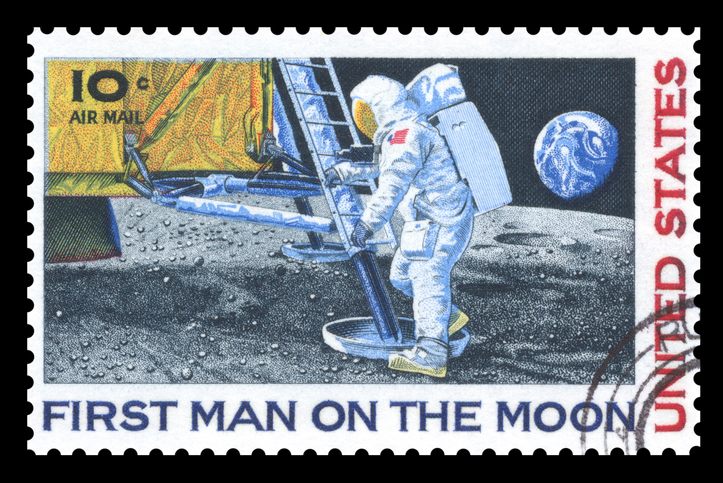Dr. Larry Kuznetz, flight controller for the Apollo 11 mission and guest speaker for DISCOVER U in February, recounted the teamwork behind the successful moon landing on July 20, 1969, which fulfilled a national goal set by President John F. Kennedy in 1961.
An estimated 530 million people watched as Commander Neil Armstrong emerged from the lunar module onto the moon. Lunar Module Pilot Edwin “Buzz” Aldrin followed Armstrong to the surface 20 minutes later and they spent 21 hours deploying scientific equipment, performing experiments, taking photographs and gathering samples. They also left commemorative medallions bearing the names of the three Apollo 1 astronauts who lost their lives in a launch pad fire and two cosmonauts who died in accidents and a silicon disk containing goodwill messages from 73 countries. Armstrong, Aldrin and Command Module pilot Michael Collins returned to Earth on the space ship Columbia, splashing down in the Pacific on July 24.
Dr. Kuznetz currently lectures at UC Berkeley and designs spacesuits with eight teams of students. He said explorers on Mars will need different types of spacesuits. Mars, as a planet, has an atmosphere with carbon dioxide and is cold and arid like Antarctica. The atmosphere is thin; minus 20 degrees at your feet may be plus 50 degrees at your head. Astronauts would be out on Mars seven to eight hours a day, seven days a week. The suit concept is two suits in one — a helmet containing pressurized oxygen while the Mars atmosphere pressurizes the rest of the suit. This reduces the weight of the portable life-support system. If a suit is punctured, they would only lose carbon dioxide, not oxygen. Also, under consideration are a lightweight, integrated radiation-protection device and suit layers that can be removed and put back on as needed.
A human landing on Mars in 2032 would require proposals for a Mars spacesuit by 2022. Kuznetz wants to have an integrated university and industry expert team ready to bid for the contract. The UC Berkeley Mars Suit project is one of several interactive projects involving MIT, Texas A&M, universities in Helsinki and Slovenia, NASA centers, nonprofits and private companies.
Dr. Kuznetz has been a NASA spacecraft builder, life-science manager, Mars scientist and taught at University of Houston, International Space University at MIT and UC Berkeley. He holds eight U.S. patents and is a private pilot. He is also an author of nonfiction, fiction and children’s books on science. His guest appearances include CNN and “The Tonight Show Starring Johnny Carson.”




